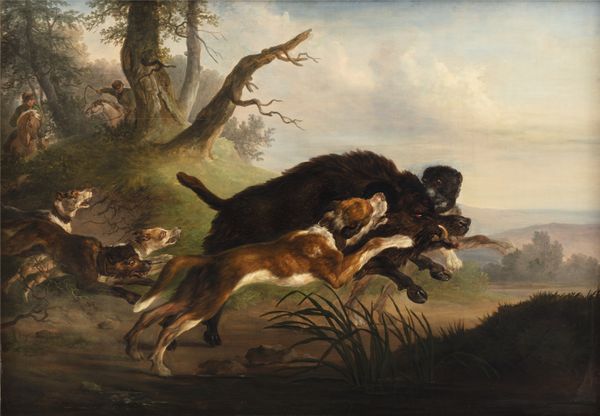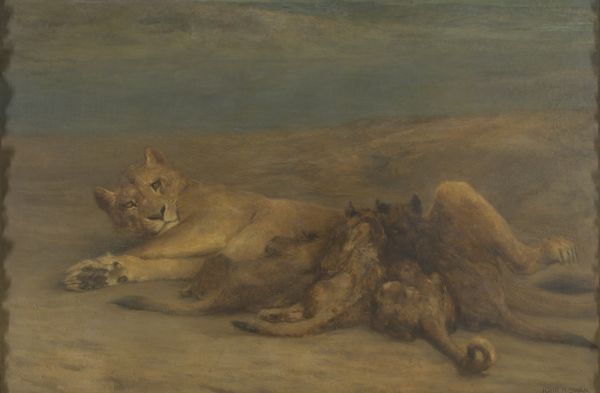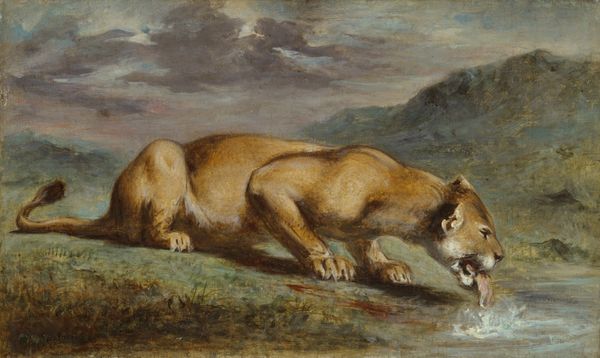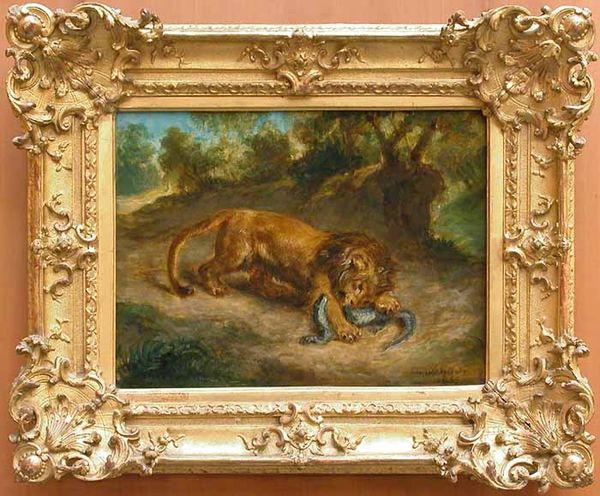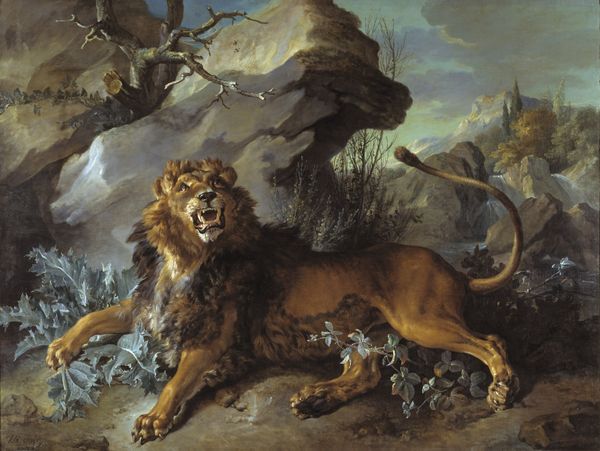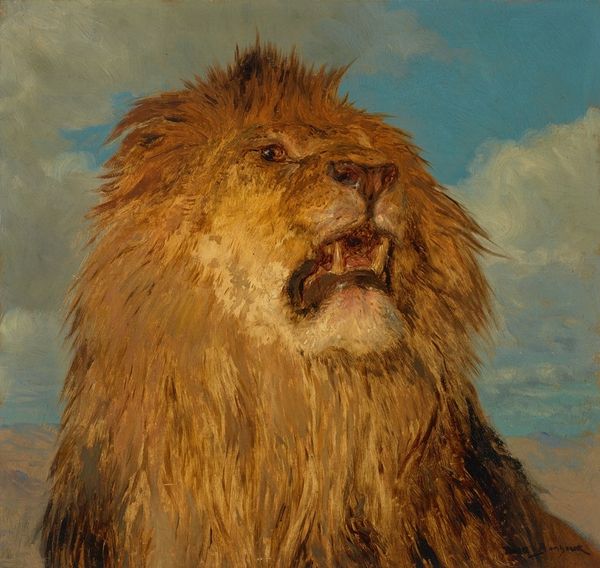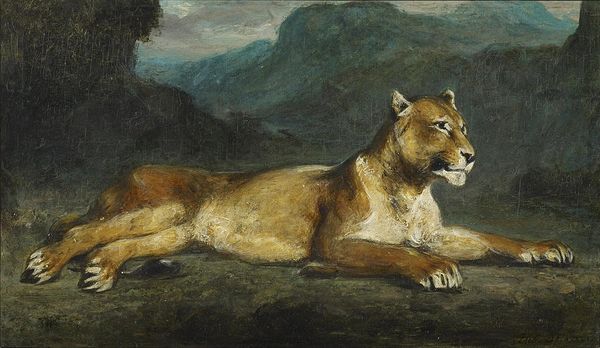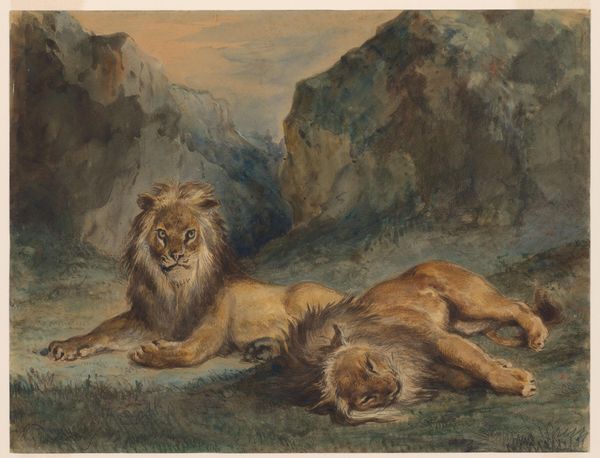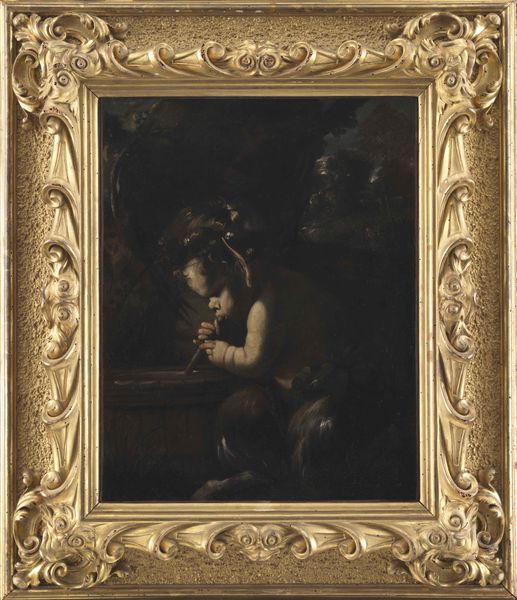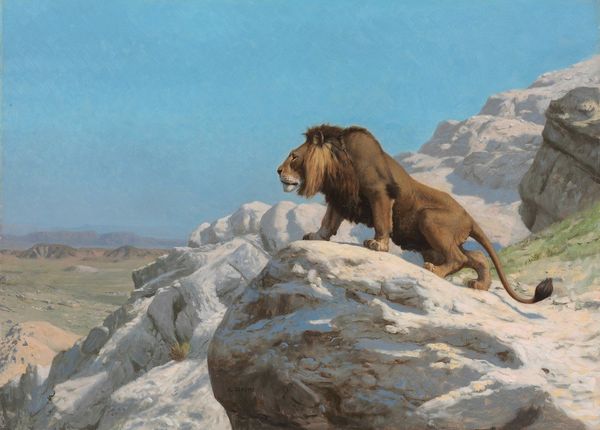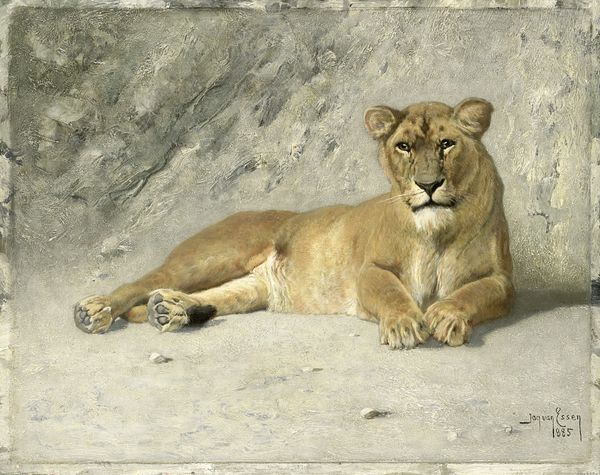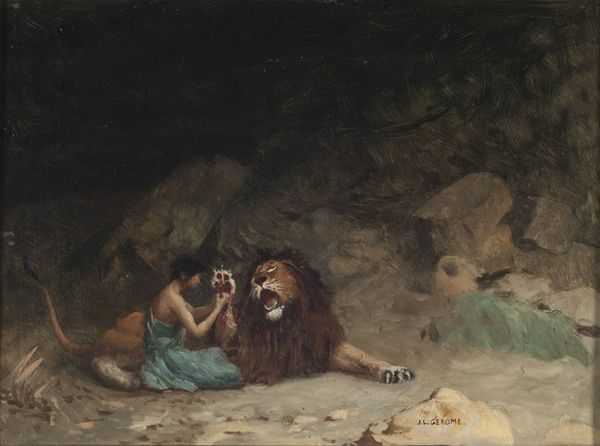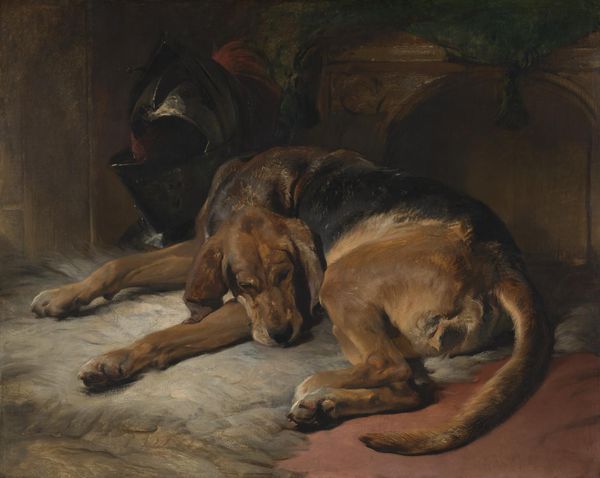
Copyright: Public domain
Curator: Jean-Léon Gérôme painted this arresting image, "Lion Snapping at a Butterfly," in 1889. It's currently held at the Carnegie Museum of Art. What strikes you most about it? Editor: It’s got such a curious mix of power and fragility. The lion is enormous, yet there’s this tiny butterfly flitting around its face. The oil paint almost gives the lion's fur a tangible, textured quality. Curator: Absolutely. Gérôme was a master of Realism, yet there's a clear Romantic sensibility here, too. The late 19th-century witnessed France's colonial pursuits in Africa. I think the lion, as a symbol of power, can't be separated from that context. Editor: That makes sense. So, you're saying this powerful creature could be read as a projection of French dominance, made somehow ridiculous by the trivial butterfly? But what about the actual materiality of the piece? The ways he builds up the ground with those small chunks of stone? Curator: A valid point. Consider Gérôme’s status as an Orientalist painter. These representations reinforced a vision of the “Orient” for European audiences, a process inherently linked with power structures of the time. How might that intention come through the materiality you just highlighted? Editor: The deliberate application of paint suggests labor – Gérôme's labor. By focusing so intently on naturalistic detail – like each grain of sand in the foreground, or each rock – it suggests the careful scrutiny of the land the French hoped to survey and, of course, control. Curator: Precisely. And the reception of such a work matters. It was likely displayed in the Parisian Salon, a crucial institution shaping artistic tastes and careers. Think about the expectations and assumptions the Parisian bourgeoisie would bring to viewing a work like this. Editor: A complex interplay of brushstrokes and sociopolitical undertones. The tension Gérôme establishes is a stark example of the social implications of painting. Curator: Indeed, a work where even a playful moment between beast and insect opens up profound questions of empire, art, and power. Editor: It forces us to acknowledge the lion as less "nature" and more "nationalistic projection".
Comments
No comments
Be the first to comment and join the conversation on the ultimate creative platform.

